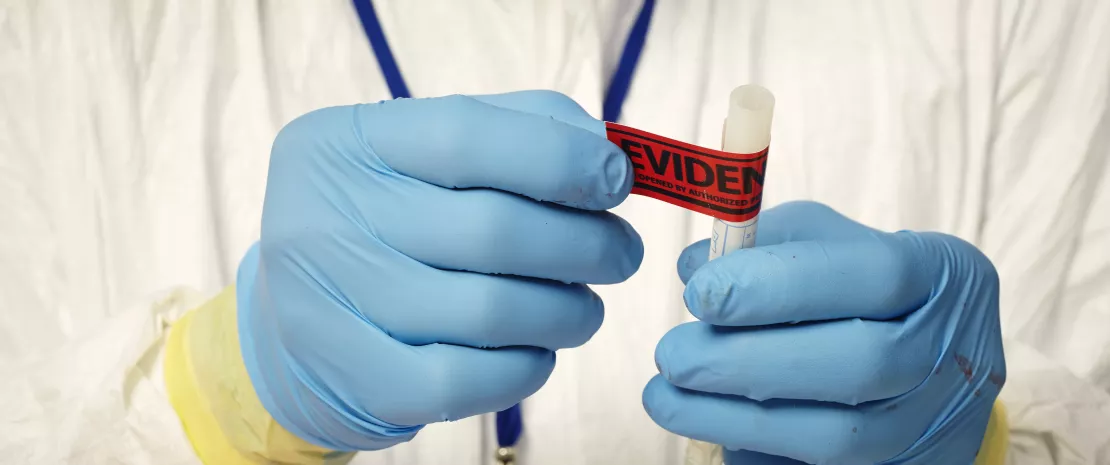How bacteria could transform sexual assault investigations
Microbiome forensics may offer a groundbreaking method to track sexual assault suspects through unique bacterial signatures left during intercourse. These microbial “footprints” can persist for days, detection even possible when DNA evidence is scarce. This new identification method could therefore assist a large number of victims, especially in cases where DNA evidence is absent or degraded.
- Learn all about microbiota
- Microbiota and related conditions
- Act on your microbiota
- Publications
- About the Institute
Healthcare professionals section
Find here your dedicated section
Sources
This article is based on scientific information

About this article
Author
For years, forensic investigations in sexual assault crime cases have leaned heavily on the analysis of human male DNA, often from sperm, found on the victim. But this isn't always straightforward. Getting enough viable sperm can be tricky, especially if sampling occurs more than 48 hours after an assault. This is where the microbiome – the vast community of microbes living in and on us – steps onto the forensic stage, offering a potential new avenue for detection and identifying perpetrators in sexual crime investigations.
This new study 1 builds on previous work showing that microbial communities differ between body sites and individuals. If these unique microbial signatures transfer during sexual intercourse, could they leave a trace that traditional DNA methods might miss? That's the core question here, specifically focusing on the " (sidenote: Sexome The collection of microbial signatures exchanged specifically during sexual intercourse. ) " – the microbial exchange during sexual intercourse.
Science is offering new opportunities to address unsolved or difficult cases involving sexual violence. Victims of sexual crimes may benefit from this scientific progress.
Sex and your unique bacterial signature
The researcher recruited 12 consensual male/female couples participating in this science-driven study. Participants collected samples from their genital areas before and after penetrative sexual intercourse. The "before" samples were taken after a period of abstinence (at least 2-4 days). The "after" samples were collected 3 to 12 hours post-intercourse, mimicking a forensic sampling scenario. They then used full-length (sidenote: 16S rRNA sequencing A method that reads a bacterial “barcode” gene to identify and differentiate species. ) to analyse each sample. Think of the 16S gene as a bacterial barcode allowing for species-level resolution, which is absolutely critical for forensic applications.
As expected, male penis skin samples were generally more diverse than female vaginal samples. Couples showed different levels of microbial similarity after sex depending on their baseline profiles. So being in a couple has a significant impact on the overall composition of bacteria found.
They also saw a clear disruption to the microbial communities in both male and female samples after intercourse. Bacterial types transferred between partners.
Bacteria typically found on male skin (like Corynebacterium, Staphylococcus, Finegoldia) increased in female samples, while key vaginal bacteria (Lactobacillus species) increased in male samples.
Urethral microbiota: a better understanding of male urinary tract infections
Surprising findings with forensic impact
What was surprising, even with condoms, bacteria still transfer, mostly woman to man, leaving microbial evidence behind them. Unique female-only bacteria stayed on a male partner for five days despite hygiene, extending forensic detection beyond sperm DNA. Plus, novel germs from gut or skin can appear in the genitals after sex, potentially offering fresh contact clues. This could add new dimensions to sexual assault cases.
Forensic promise: a new tool for justice
The key takeaway is clear: specific bacterial signatures transfer during sexual intercourse. Using high-resolution sequencing techniques allows forensic scientists to potentially identify unique bacterial types.
The study shows compelling evidence that microbiome analysis could offer a valuable additional tool for sexual assault investigations, especially when male DNA is limited or absent. It also demonstrates that the microscopic exchange of bacteria during sexual contact leaves a detectable, high-resolution trace – a " (sidenote: Sexome The collection of microbial signatures exchanged specifically during sexual intercourse. ) " signature – that holds significant promise for helping forensic investigators pursue justice.














